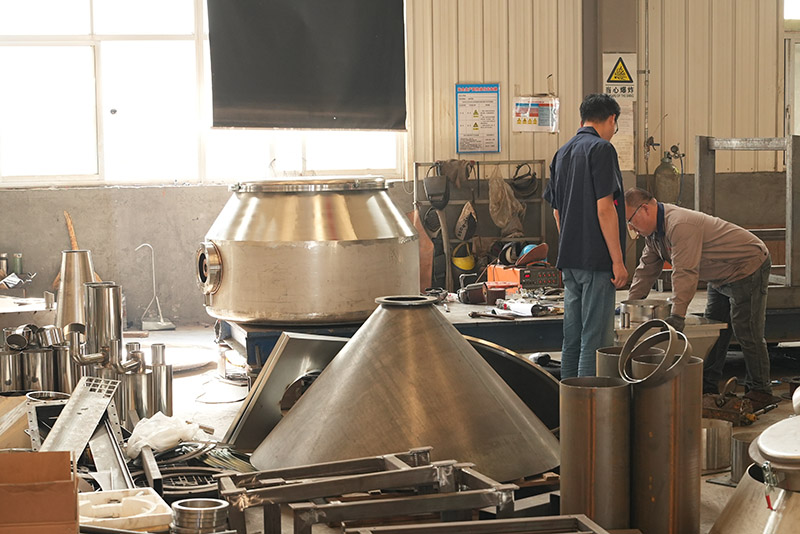Introduction of the principle and application of mixer
The principle and application of the mixer are described exhaustively as follows:
Mixer, as a kind of high-efficiency industrial equipment, its core principle lies in the clever use of mechanical force and gravity, two or more materials with different properties are evenly and fully mixed. This process not only requires the material to achieve a uniform distribution on the macro level, but also seeks to achieve uniform admixture between particles on the micro level. Mixing machinery with its unique advantages, in the chemical industry, agriculture, pharmaceuticals, food, construction and many other industrial fields play an irreplaceable role, but also deep into people's daily lives, become an important tool to improve the quality of life.
In the pharmaceutical industry, the role of the mixer is particularly critical. It can be different components, different nature of raw materials through the precise control of mechanical movement, uniformly mixed together, the formation of compounds with specific therapeutic effects, to provide a solid foundation for the production of drugs. In addition, the mixing machine can also effectively increase the contact surface area of the material, which is not only conducive to the full implementation of the chemical reaction and improve the reaction efficiency, but also accelerate the process of physical changes, such as the rapid and uniform dispersion of granular solutes into the solvent, significantly shorten the dissolution time, and enhance the mixing effect.

In daily life, a wide range of mixing machinery, according to the different materials handled, can be roughly divided into four categories: gas and low-viscosity liquid mixer, paste mixer, thermoplastic material mixer and granular solid material mixer. Each of these mixing machines has its own characteristics and can meet the diverse needs of different industries and life scenarios.
Among them, solid material mixing machine occupies an important position in industrial production and daily life. Most of the powder and granular solid material mixing machines adopt intermittent operation mode, i.e., mixing a certain amount of materials each time, and then carrying out the next batch of mixing after mixing evenly. This mode of operation is flexible and convenient, applicable to a variety of material mixing scenarios.
There are three main types of solid material mixers on the market: V-type mixer, three-dimensional mixer and tank mixer. v-type mixer with its unique v-shaped structure, so that the material in the mixing process can produce strong convection and shear effect, so as to achieve high efficiency mixing. Three-dimensional mixer is using a unique mixing arm and mixing blade design, so that the material in three-dimensional space for a full range of mixing, mixing effect is more uniform. Tank mixer is suitable for large-scale material mixing, its structure is simple, easy to operate, is the first choice of equipment in many industrial production lines.

The uniformity of mixing is an important indicator of the performance of the mixer. The degree of mixing can be divided into ideal mixing, random mixing and completely immiscible three states. In practice, the degree of mixing of different kinds of materials in the mixer will be affected by a variety of factors, such as the proportion of materials, physical state (such as particle size, density, humidity, etc.), chemical properties and the design parameters of the mixer. Therefore, in the selection and use of mixing machines, according to the specific characteristics of the material and mixing requirements, scientific and reasonable selection and parameter settings to ensure that the mixing effect to achieve the desired goal.


